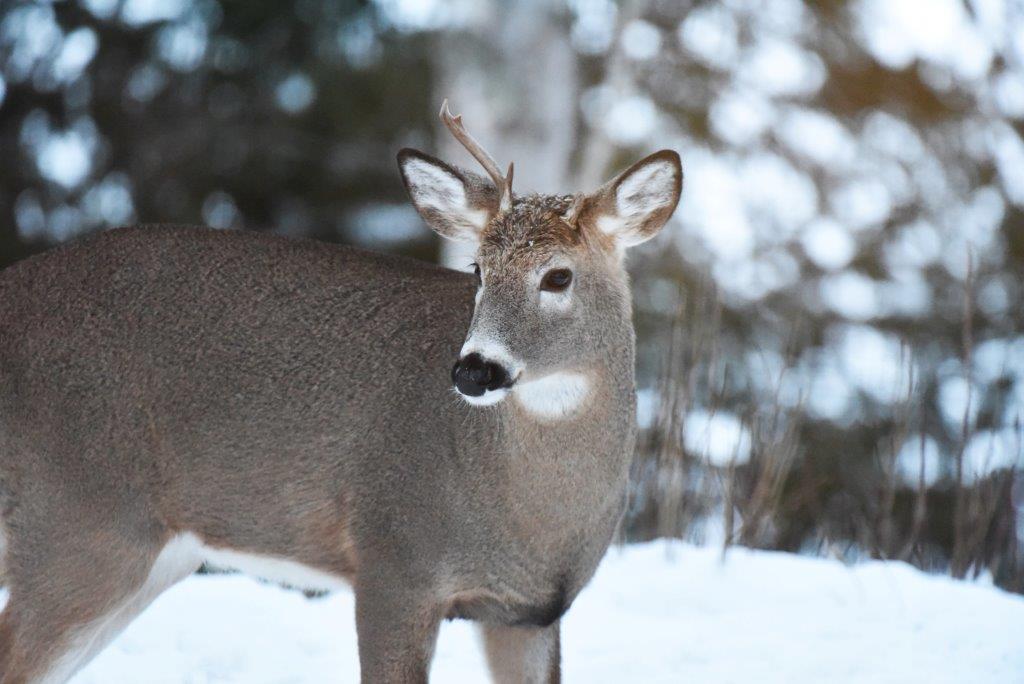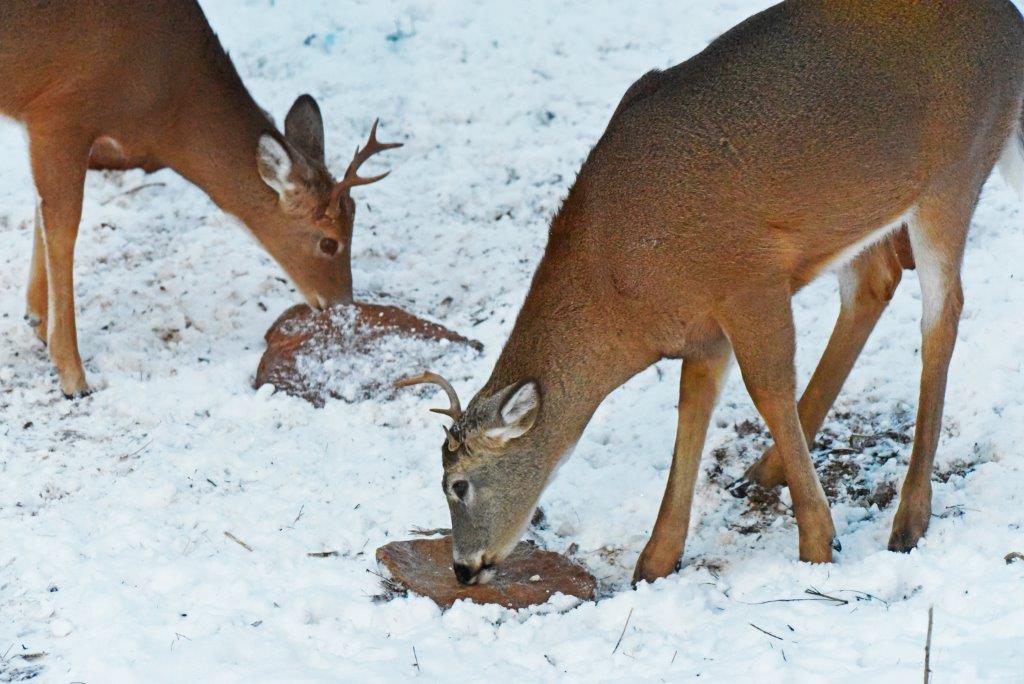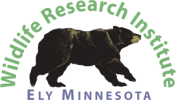Bear Attack - UPDATE December 19, 2017
Bears are supposed to be sleeping! We got a call that a bear had attacked two people some 30 miles southeast of here. It is extremely unlikely that this would be a clan bear because of the distance from research area. Buck with broken antler
Buck with broken antler
The newspaper account is about all I really know about it. The key items are that the 200-pound female attacked a dog and the dog’s owner, age 68, jumped on the bear’s back, was thrown off, and bitten a couple times. I don’t know if the dog was leashed or whether it was being aggressive toward the bear. It seems unlikely the bear went after the dog and caught it, considering the agility of dogs.  Bucks sharing date mashAs we’ve said before aggressive dogs are responsible for a disproportionate number of bear attacks on humans who get involved when the bear retaliates. 150 yards down the shore the bear approached another person. Could the bear still be feeling defensive after her encounter with the dog and having a human jump on her and having to defend herself? Such defensiveness would be rare, as is evidenced by the rarity of bear attacks; but (thinking of the bell-shaped curve) there could be a bear far out in a tail that defies all logic. All we can say in these situations is how rare these attacks are. In my 50 years of pushing the envelope with black bears of all sizes, ages, and sexes, I’ve never had one come after me and hurt me. The few nips and scratches I’ve gotten were all when I initiated the contact. Here’s the article.
Bucks sharing date mashAs we’ve said before aggressive dogs are responsible for a disproportionate number of bear attacks on humans who get involved when the bear retaliates. 150 yards down the shore the bear approached another person. Could the bear still be feeling defensive after her encounter with the dog and having a human jump on her and having to defend herself? Such defensiveness would be rare, as is evidenced by the rarity of bear attacks; but (thinking of the bell-shaped curve) there could be a bear far out in a tail that defies all logic. All we can say in these situations is how rare these attacks are. In my 50 years of pushing the envelope with black bears of all sizes, ages, and sexes, I’ve never had one come after me and hurt me. The few nips and scratches I’ve gotten were all when I initiated the contact. Here’s the article.
On a less violent note, the picture is of the broken-antler deer looking around after chasing 5 deer off the date mash blocks. Then, surprisingly, he accepted another young buck to eat date mash only a few feet from him.
Thank you for all you do.
Lynn Rogers, Biologist, Wildlife Research Institute and North American Bear Center
